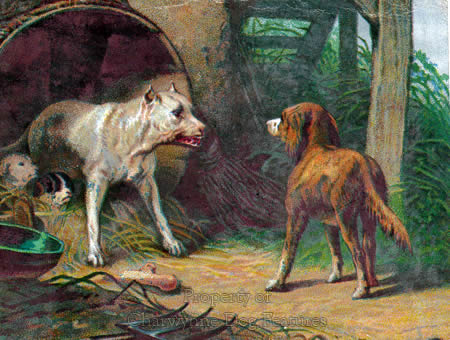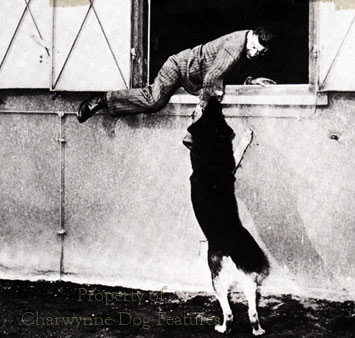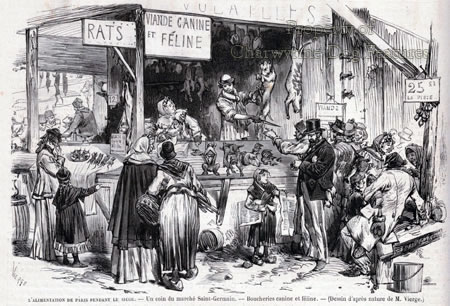346 Creating Danger To Dogs
CREATING DANGER TO DOGS
by David Hancock

 There's a subject far more important than winning rosettes, securing a judging appointment or achieving membership of a committee and it's one so often avoided, evaded or even ignored. It concerns temperament in our breeds of dog. Most dogs of any breed ending up 'in rescue' are there because they display problems in their temperament. This means that even handsome soundly-constructed dogs are unacceptable in the family environment because they cannot be trusted temperamentally. Owners of dodgy-tempered dogs all too often make lame excuses for them. But it is not unknown either for the dreaded 'kennel blindness' to affect those with successful show or working dogs of untrustworthy temperament, even to the extent of breeding from such flawed stock.
There's a subject far more important than winning rosettes, securing a judging appointment or achieving membership of a committee and it's one so often avoided, evaded or even ignored. It concerns temperament in our breeds of dog. Most dogs of any breed ending up 'in rescue' are there because they display problems in their temperament. This means that even handsome soundly-constructed dogs are unacceptable in the family environment because they cannot be trusted temperamentally. Owners of dodgy-tempered dogs all too often make lame excuses for them. But it is not unknown either for the dreaded 'kennel blindness' to affect those with successful show or working dogs of untrustworthy temperament, even to the extent of breeding from such flawed stock.


I don't have a problem with male dogs which are a bit sharp with other dogs or bitches which take a dislike to a litter-sister or dogs with a strong guarding instinct. The problem lies not with dogs with predictable attitudes but those which bite humans without warning and for no discernible reason. These are the dogs which are capable of shaming the breed, or, worse, getting the breed banned as a dangerous one. This is a topic which more than any other at the moment demands a debate. If not, some precious breeds will face an uncertain future. We live in times when vote-conscious politicians in many Western countries are only too eager to rush through ill-conceived laws to pacify rightly-concerned citizens.


Scientists have come up with three possible causes of bad temperament: unsatisfactory upbringing, heredity and the dog's own nature, unrelated to its breeding or upbringing. Sporting and Working dogs can be members of a very dominant breed, terriers especially -- and with their heritage that's hardly surprising. But a dog of any size, allowed to be too dominant, is a definite danger. We all know of cases where the dog is allowed the run of the house, to replace its owner as pack-leader and display unwanted aggression without being checked. A well-known show breeder used to warn visitors "Don't look at the dog when I let him into the room"; another would warn "Don't stand up whilst the dog is with us" and another would advise "Whatever you do, don't touch him!"
Such warnings tell you more about such people than it does about their dogs. You have to ask the crucial question: Who's in charge, the dog or the owner? Such dominance is quite intolerable and in a small pack of dogs horribly dangerous. Yet there are well-known breeders who allow their dogs to take charge, to assert themselves, to become the boss. One Neapolitan Mastiff 'expert', ever ready to pronounce on the breed, was once forced to take refuge in his own bedroom when his dominant dog asserted itself too forcibly. There is a huge difference between a perfectly natural guarding instinct and an unacceptable degree of dominance. When I was a soldier I had experience of guard-dogs, anti-ambush dogs, tracker dogs and detection dogs; those in the first two categories could be more than fierce--but they were always under control.
Upbringing clearly matters a great deal. My first two Bullmastiffs were both male and lived with us as pets. Their early squabbles as pups were very firmly dealt with and they subsequently grew up to be contented kennel mates. Dogs are always happier when they know the rules. But breeding matters too. What do scientists tell us about the inheritance of temperament? The American Vet Leon Whitney crossed a Bull Terrier bitch, regarded as a natural killer and fighter, with a placid Bloodhound. He found that two of the resultant pups, all raised the same, possessed suspect temperament, one having to be destroyed because of its innate aggression. Another mating between a placid Bull Terrier bitch and a Bloodhound produced no offspring with flawed temperament. Of the fourteen pups from these two matings only two had faulty temperaments, both from the aggressive Bull Terrier bitch.
Humphrey and Warner, in their book Working Dogs, of 1934, showed that excessive timidity, which can lead to 'fear-biting', could be bred out, with more than one factor or gene governing this trait. Bold, confident dogs with controlled dominance have been found to be less likely to bite people than excessively timid dogs. The latter should never be bred from. The guarding instinct is itself strongly inherited; strong-minded very wilful pups sold to unsuitable homes can end up creating problems for their new owners. Bold pups are however preferable to shy ones. The experiments of Kruskinsky showed that excessive shyness, which can lead to 'fear-biting', increased markedly when two shy dogs were mated to each other.
In his Genetics for Dog Breeders of 1990, Roy Robinson writes on breed differences: "That inherited differences do exist is indisputable, as shown by the various breed categories with different modes of behaviour. A small part of this variation could be imitative or learnt from the mother, siblings or older members of a kennel, but the major part is instinctive." This means that an aggressive dam can adversely influence her offspring both before and after their birth. It means too that an over-aggressive male dog can influence the younger members of the same kennel. Robinson went on to state "...there is the excessively excitable, nervous or highly-strung animal...such behaviour is likely to be inherited and individuals showing such behaviour should not be used for breeding."
In his Practical Genetics for Dog Breeders of 1992, Malcolm Willis writes: "Cowardly or excessively aggressive animals have no place in any breeding programme no matter how beautiful they may be." He sets out a table which shows that the heritability of nervousness is 50% and that of temperament 30-50%. Abnormal temperament can be a matter of chance too as Hodgman indicated in 1963; he did stress however that selection in certain breeds for assertive behaviour made this more likely. Thompson in 1957 showed that the individual dog is subjected to external influences which affect its behaviour from the moment of birth but it is likely that heredity is a major contributor to behavioural traits. Socialisation is clearly an important factor in later behaviour.
Eberhard Trumler, in his highly perceptive book Understanding Your Dog of 1973, wrote: "Again the behaviour of the dog which has been badly brought up during its socialisation phase will later bear an astonishing resemblance to that which, in human society, leads to the drop-out or the criminal." Pups which have simply been left to starve spiritually in an outhouse from three to seven weeks of age will find the real world a frightening and daunting place. That is just one of the reasons why puppy-farms are such a danger to the production of future family pets. Abnormal aggression is a defence mechanism in a fearful dog. Territorial aggression is natural but still requires controlling. Young dogs have much to contend with: inadequate socialisation, aggression inherited from their forebears or aggression picked up from imitating older dogs.
Michael Fox, the distinguished animal behaviourist, in his book, also entitled Understanding Your Dog, of 1974, wrote: "Too many breeders are selecting solely for conformation, for 'showy' or 'stylish' looks, which often become distorted, mimic exaggerations of the original breed standards. Insufficient attention is paid to selecting for stable temperament and for trainability and, consequently, many breeds are becoming suburban status symbols--ornaments, not companions." He's right, of course, the evidence is before us. But we would be extremely unwise not to accept that far too many working dogs have unsatisfactory temperaments. Fox also wrote: "Severe aggression or avoidance behaviour and fear biting on its home territory are characteristic of the socially maladjusted dog. Tying up a dog may increase aggression..." Many guard and farm dogs are tied up for long periods.
Some years ago I went to the Black Mountain on the Hereford/Welsh border to research the bob-tailed collies found on farms there. Subsequently a magazine sent a lady photographer to these farms to obtain illustrations for the article. She rang me for directions and I warned her not to get out of her car until the farmers appeared. Unable to raise anyone but surrounded by barking farm dogs, she gently opened her car door and put one Wellington-booted foot on the ground. Great mistake! In seconds her boot had been ripped to pieces before she could retrieve it. These dogs rarely saw strangers, were not socialised and needed to be extremely determined to herd cows with calves. Once strangers were introduced to them by their owners they were perfectly friendly.
It is a common mistake, as the Home Office has discovered in their disastrous rightly-reviled Dangerous Dogs Act, to make the assumption that dogs which are aggressive towards other dogs are aggressive towards humans. This is one of the major flaws in the DDA. When I lived in Germany some thirty years ago, there was a local pack of dogs which hunted down and savaged any dog straying into their territory. They mixed freely and in harmony however with not just the local 'pack' of children but any human approaching them. When I was a student and employed as a temporary postman at Christmas, I delivered letters to one housing estate where their local pack of dogs menaced every human newcomer but merely sniffed at any passing stray dog. 
Famously good-natured breeds like Labradors, Golden Retrievers and English Springers have been banned in some places in North America, as well as Bull Terriers, Staffies and Collies, following biting incidents. For those who really love their breed, as opposed to those who impress upon you how much they do but then proceed to breed from unstable dogs, the choice is very clear. Either give temperament a higher priority or risk seeing your beloved breed banned from whole countries. It makes commercial sense as well as sound morality to breed dogs with stable equable temperaments. It would be a salutary lesson if purchasers of pups or adult dogs which turn out to have unacceptable temperaments sued the seller in a court of law and obtained fair redress.
Canine welfare workers in every breed will tell you that their charges often originate from well-known breeders. Such breeders can actually make more money selling to the pet market than they can from showing dogs. In his informative The Private Life of the Dog of 1965, RH Smythe, a vet with a vast knowledge of dogs, wrote: "People who breed dogs for exhibition purely and simply, are interested only in the dog's contours and its physical uprightness, and seldom care two straws about its mental equilibrium." It surely makes no commercial sense to breed unstable dogs if the pet market is important to you.
Is it just plain ignorance that leads 'top breeders' to produce dogs with unsatisfactory temperaments? Smythe went on to write: "All this results from the now almost universal habit of mating a line-bred, half-witted bitch to a dog whose sole claim to fame lies in his shape, one of which may quite possibly be even more feeble-minded than your bitch." The answer to hyper-aggression in male dogs for far too many vets is in castration. But leading behaviourist Bruce Fogle has recorded in his The Dog's Mind of 1990: "Dominance aggression is both inherited and learned. Although 85% of clinical cases occur in males, it is not puberty related. The hormonal influence on this behaviour probably occurred near birth when the male pup's brain was 'masculinized' by a surge of testosterone. This is why castration has little beneficial effect on correcting this unpleasant behaviour." Regrettably vets are not always well informed on animal behaviour.
It is unfair of course to expect your local vet to remedy unwise breeding or inadequate social training. Breeders have the key responsibility: temperament must be given a higher priority. We have a special duty towards our native breeds. All Bull Terriers in the world come from British stock. If we breed and then export Bull Terriers with unsafe temperaments we put at risk the whole future of this splendid breed. If we breed and then sell pups from 'iffy' parents of any breed to pet homes we deserve all the legislation we are threatened with. Those involved in breed rescue and rehoming tell us that 50% of the dogs cannot be rehomed because of unsuitable temperaments. Why not listen to what those remarkable individuals involved in breed welfare are saying to us? The alternative is frightening enough: goodbye breed!